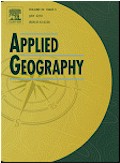| Journal Article |
 |
|
| Article Title | Relating plant diversity to biomass and soil erosion in a cultivated landscape of the eastern seaboard of Thailand | | Author | Rajendra P. Shrestha, Dietrich Schmidt-Vogt and Nalina Gnanavelrajah | | Year | 2010 | | Journal Title | Climate Change and Applied Geography – Place, Policy, and Practice | | Institution | Elsevier Ltd | | Volume | 30 | | Issue | 4 | | Pages | 606-617 | | Call Number | JA0381-10 | | Keywords | Plant diversity, Agricultural land uses, Biomass, Erosion, Thailand |
|
| Abstract: |
| Plant diversity can affect ecological processes through effects on biomass and soil condition. A study was carried out in an agricultural watershed of Thailand to document plant species richness of different agricultural land uses and to assess its relationship with biomass and soil erosion. A nested sampling design of 20 x 20 m, 10 x 10 m, 5 x 5 m and 1 x 1 m quadrats was employed to study species richness of three categories of plants: herbaceous plants, shrubs and trees. Interviews were conducted with farmers who owned the cultivated fields where sampling plots were located. Plant diversity was assessed by computing Shannon index, Simpson index, and Species richness. Species utility index, which is the percentage of species identified as useful, was also estimated for each land use. Biomass was estimated using methodology recommended by FAO and soil erosionwas estimated using the universal soil loss equation (USLE). From among the different land use types, mixed orchard ranked first in terms of plant diversity while paddy ranked last. Land uses with monocropping of shrubs, such as cassava, pineapple and sugarcane had lower plant diversity than land uses with monocropping of trees, such as coconut and para rubber. Monocropping of eucalyptus was an exception. Rotations of monocrops, namely pineapple–cassava and sugarcane–cassava, or intercropping, namely coconut–cassava, also had a higher plant diversity as compared to monocropping of shrubs. The highest species utility index of 61 was found in orchards, the lowest of 9 was found in Eucalyptus plantations. Plant diversity was found to have a significant positive correlation with biomass and a negative, though non-significant, correlation with soil erosion. |
|
